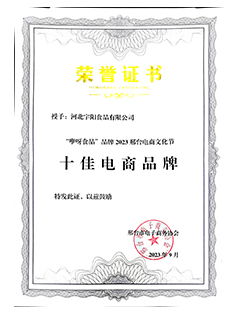Advantages of Using Aluminum Foil Flexible Duct for HVAC Systems and Ventilation Needs
The Versatility and Benefits of Aluminum Foil Flexible Ducts
Aluminum foil flexible ducts are an essential component in modern HVAC (Heating, Ventilation, and Air Conditioning) systems. Known for their lightweight, durability, and resistance to various environmental factors, these ducts play a crucial role in ensuring optimal performance in both residential and commercial settings.
One of the primary advantages of aluminum foil flexible ducts is their flexibility. Unlike traditional rigid ductwork, which can be cumbersome to install, flexible ducts can be easily maneuvered in tight spaces and around obstacles. This flexibility simplifies the installation process, cutting down on labor time and costs. Technicians can bend and shape the duct to fit various configurations without needing extensive modifications or additional fittings.
The construction of aluminum foil flexible ducts contributes to their functionality. They typically consist of a spiral wire frame encapsulated in layered aluminum foil, which provides strength and support while remaining lightweight. This design allows for easy handling and installation while maintaining a robust structure that can withstand significant pressure. The use of aluminum also adds an extra layer of protection against corrosion, making these ducts suitable for various environmental conditions.
Another compelling feature of aluminum foil flexible ducts is their thermal efficiency. Aluminum has excellent thermal conductivity, which helps to reduce heat loss and gain during the airflow process. This efficiency results in improved energy performance, contributing to lower utility bills and a reduced carbon footprint. When used in conjunction with insulated materials, aluminum foil flexible ducts can maintain desired temperatures more effectively, ensuring that HVAC systems operate efficiently.
aluminum foil flexible duct

In addition to energy efficiency, aluminum foil flexible ducts are known for their ability to facilitate better airflow. Their smooth interior surface reduces friction, allowing air to flow freely and efficiently through the ductwork. This characteristic is particularly important in maintaining indoor air quality, as it minimizes the accumulation of dust and pathogens that can occur in less efficient duct systems. A well-designed duct system can significantly improve the overall air quality in a building, supporting healthier living and working environments.
Moreover, aluminum foil flexible ducts are versatile in their application. They can be used in a variety of settings, including residential homes, commercial buildings, and industrial facilities. Whether for central heating systems, air conditioning, or exhaust ventilation, their adaptability makes them a go-to choice for contractors and builders alike. This versatility extends to their compatibility with various HVAC systems, allowing for seamless integration regardless of specific requirements.
Safety is another important consideration in the use of aluminum foil flexible ducts. They are non-combustible, making them a safer option than many plastic alternatives, which can pose fire hazards. Furthermore, their resistance to moisture and changes in temperature minimizes the risk of mold growth and other related concerns, contributing to a healthier indoor environment.
In conclusion, aluminum foil flexible ducts represent a practical and efficient solution for modern HVAC systems. Their flexibility, thermal efficiency, and superior airflow capabilities make them indispensable for optimizing indoor climate control. As the world moves towards more sustainable building practices, the popularity of aluminum foil flexible ducts is likely to grow, transforming the way we think about ventilation and air distribution in our environments. Whether in a bustling city office or a cozy home, these ducts provide a reliable, efficient, and safe solution for all heating and cooling needs.
-
Unrivaled Performance and Applications of PU Pneumatic Hoses and TubesNewsJun.11,2025
-
The Transparent World of Industrial Tubing and Hosing SolutionsNewsJun.11,2025
-
The Intricate World of Pneumatic Conduits: Tubes and HosesNewsJun.11,2025
-
The Dynamic Landscape of Pneumatic Conduits: Unraveling Key ComponentsNewsJun.11,2025
-
The Diverse Applications and Significance of Transparent PVC TubingNewsJun.11,2025
-
High - Pressure Pneumatic Tubing and Systems: An In - Depth LookNewsJun.11,2025














